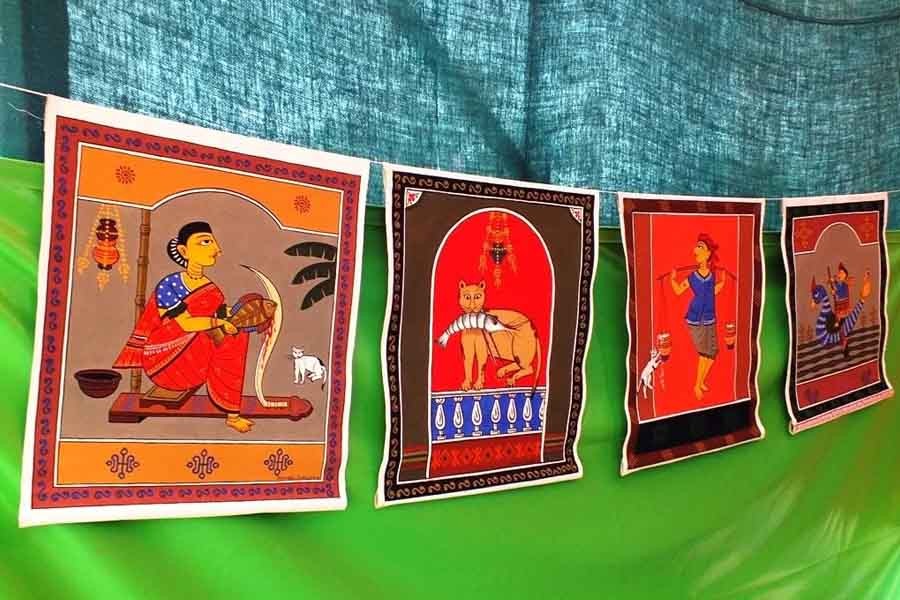In the central panel, Yama’s mother is punishing the transgressor by cooking his head in a pot. Gazi Pir is seated on a tiger, flanked by Manik Pir and Kalu. Gazi’s son Fakira, sister Lakshmi, goddess Ganga, Yamadut, Kaladut and obviously a huge number of tigers are also present there. All these make Gazir Pat, a form of scroll painting, illustrating the life of Gazi Pir, the King of tigers.
Even a few years ago, narration of the story of Gazi Pir with the help of Gazir Pat was a popular form of entertainment mainly in rural areas, especially in greater Dhaka, Jessore, Khulna, Mymensingh, Sylhet, Comilla, Noakhali, Faridpur, Rajshahi. It started from the 7th century, approximately. The performers were from Bedey community and basically Muslims.
Fahmida Akhter, assistant professor of Drama and Dramatics, Jahangirnagar University, wrote in her blog that, ‘In Gazir Pat, we see a series of sequential still images which are interpreted by the Gayen (singer) and Dohar (orchestra). With the combination of audio and visuals, Gazir Pat is seen as an indigenous and prehistoric version of cinematic images.’
Usually the performances of Gazir Pat or Gazir Gan takes place in the courtyard of rural dwellings. Performers gradually unroll the scroll, point to different illustrations with a thin bamboo and narrate the incidents through songs.
Gazir Pat is made of thick cotton fabric. It is 4’8” long and 1’10” wide, divided into 25 panels. Every figure here is flat and two dimensional. among the colours, red and blue are used mainly. There is no attempt of realism as the figures appear rigid and lifeless. Gazir Pat became extinct in the mid of 20th century. Still people from Bedey community float here and there bearing this traditional pictorial art of our culture.


